How it was at Enterprise Connect: how cloud technologies live
Enterprise Connect is perhaps the only event in the United States that gathers all the key companies and experts in the field of cloud communications and related technologies every year. It is here that you can see the launch of new products of key players in the market - such as Microsoft, Google, Avaya, Genesys, Cisco - to “touch” the products of key vendors and chat with developers to delve deeper into the subtleties of solutions. And, of course, get an idea of the state of the market and the prospects for its development. For all of this we (the CoMagic / UIS team) went there and went in early March. Below is something like “travel notes” about what we saw and heard at the conference.
The main theme of the conference was the topic of "cloud communications". It is clear that this is a very broad concept that combines many solutions for various purposes and scale - from virtual PBXs to enterprise-class solutions, cloud contact centers and PaaS solutions (platform-as-service), allowing companies to build their own solutions on the supplier platform. (a vivid example of the model is the Twilio service, on the platform of which a link is built, for example, the world famous Uber service).
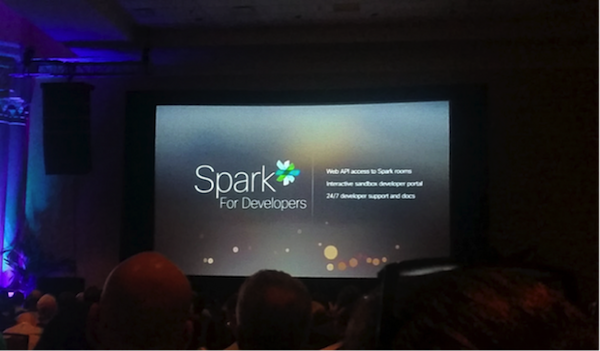
')
Now Skype for business includes a virtual PBX, and you can buy numbers in a minute in many countries around the world. If this product starts working with Russian numbers, the VATS market in Russia may poplohet. They promise that by June 100 countries will be available.
What's cool about Microsoft's “VATS”:

In one of the reports came across an interesting study:

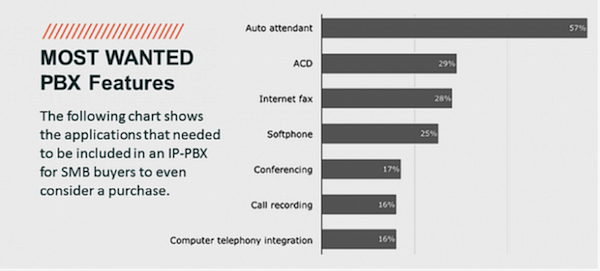
Note: auto attendant, ACD - automatic call distribution by pressing a button or voice control.
On the final day of the conference there were mainly panel discussions, so we will briefly tell you about what was discussed in the most interesting section for us (as CoMagic).
Representatives of the world's largest companies, developing solutions for customer service (contact centers, first of all), talked about modern technologies to improve customer service.
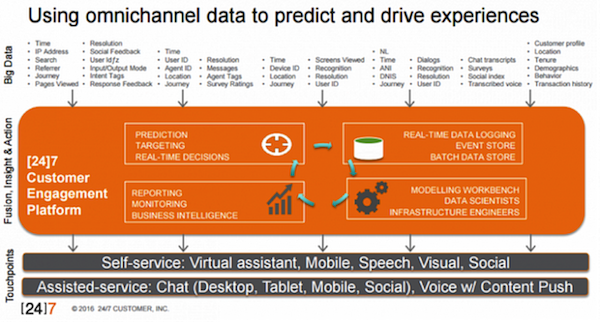
Trend - communications are becoming more personal. More and more customer information is becoming available. All the cooler technologies that allow you to store large amounts of data and process them in real time. The figure is a diagram of an “ideal contact center” using all modern data processing technologies and communication channels with customers.
Users want companies to collect more data about them and use this information to serve them faster / better:
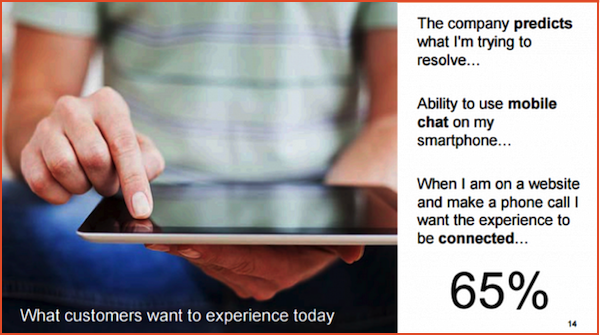
In order to ensure the possibility of personalized service, 70% of users are ready to share their personal data with companies (I wonder how much the result would be different in Russia?):

The central theme of the conference was personalization. For the personalization of communication with customers, all new ways of interaction / interpenetration of communication channels are invented:
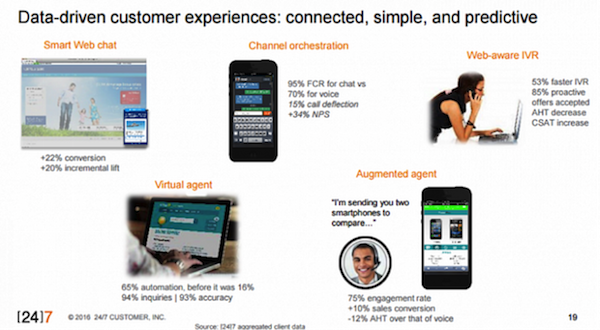
I especially remember two technologies that were positioned as the newest and most advanced:
We also remember this because in the UIS / CoMagic product lines we already invented something similar. In 2015, several research projects were launched, two of which were dedicated to just such technologies. As a result of the first project in our virtual PBX, the “Segmentation” operation (our name is Web-aware IVR) appeared in the settings of call processing scripts.
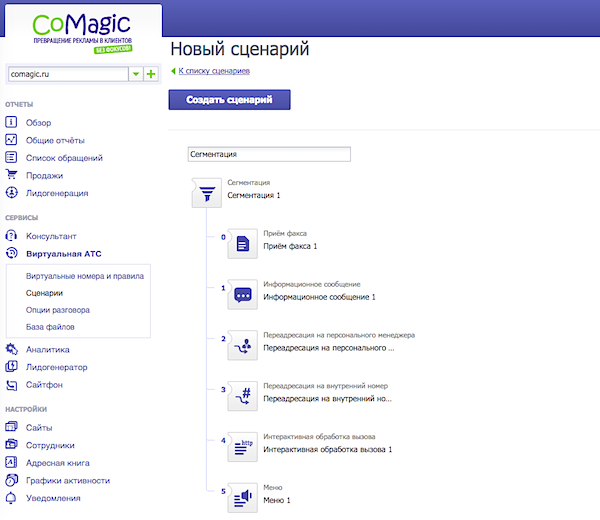
And the second research project on the “seamless” linking of communication channels is still ongoing and will also soon move to the implementation stage of product features. As a result, we were a little proud and concluded that Russian cloud communications technologies are not only technologically lagging behind Western technologies, but, conversely, are at the very edge of progress.
Well, we will continue to continue to study the experience of Western colleagues, share ours and - most importantly - work hard on the development of our services so that Russian companies can use the most advanced cloud communications technology to serve their customers.
Who was?
The main theme of the conference was the topic of "cloud communications". It is clear that this is a very broad concept that combines many solutions for various purposes and scale - from virtual PBXs to enterprise-class solutions, cloud contact centers and PaaS solutions (platform-as-service), allowing companies to build their own solutions on the supplier platform. (a vivid example of the model is the Twilio service, on the platform of which a link is built, for example, the world famous Uber service).
Top Trends
- Definitely the main current trend in cloud communications in the Enterprise segment is the combination of three components in one product / ecosystem: Calling (calls), Texting (text messages), Meetings (audio and video conferences). All major US vendors (RingCentral, 8x8, Cisco, Avaya, Mitel, etc.) speak about this configuration of their product solutions.
- The second important point. If Russia still has doubts about whether a virtual PBX is needed at all, or it is better to use regular office telephony / Asterisk ( remember a recent article ), then in the USA there is absolutely no doubt that the future is cloud communications, and they are already beginning to dominate the market.
- All major manufacturers of communications software products pay a lot of attention to developing their API and building an ecosystem of developers around it. Sample Cisco with its new Spark product:

')
New product launches
Microsoft introduced a new version of its product Skype for business
Now Skype for business includes a virtual PBX, and you can buy numbers in a minute in many countries around the world. If this product starts working with Russian numbers, the VATS market in Russia may poplohet. They promise that by June 100 countries will be available.
What's cool about Microsoft's “VATS”:
- Added cool tools to monitor the quality of communication. For each call, you can see a bunch of information about the location of subscribers, the quality parameters of communication.
- Added speech2text - on the fly will be able to make a transcription of the conversation in the text.
Avaya launches cloud messaging platform as a service
- We decided not to mix with the main brand and launch it as a separate product - the Zang service.
- Avaya sees a great future in the development of cloud communications as a service (CPaaS) and will rely on Zang.

Insight: what most American users want from cloud PBX
In one of the reports came across an interesting study:


Note: auto attendant, ACD - automatic call distribution by pressing a button or voice control.
Another insight: in 2016, customer service will change analytics
On the final day of the conference there were mainly panel discussions, so we will briefly tell you about what was discussed in the most interesting section for us (as CoMagic).
Representatives of the world's largest companies, developing solutions for customer service (contact centers, first of all), talked about modern technologies to improve customer service.

Trend - communications are becoming more personal. More and more customer information is becoming available. All the cooler technologies that allow you to store large amounts of data and process them in real time. The figure is a diagram of an “ideal contact center” using all modern data processing technologies and communication channels with customers.
Users want companies to collect more data about them and use this information to serve them faster / better:

In order to ensure the possibility of personalized service, 70% of users are ready to share their personal data with companies (I wonder how much the result would be different in Russia?):

Results: how communications of the 21st century will look
The central theme of the conference was personalization. For the personalization of communication with customers, all new ways of interaction / interpenetration of communication channels are invented:

I especially remember two technologies that were positioned as the newest and most advanced:
- Web-aware IVR
The technology allows, when calling a site visitor to a company, to build individual call processing scenarios based on the properties and preferences of a particular visitor. In order to make this possible, a symbiosis of virtual PBX technologies and the so-called “dynamic call tracking” is required. The phone call is associated with the session of the visitor on the site and, accordingly, with all the session data - the current open page, source of the visit, history of previous visits, etc. This provides truly unlimited possibilities for improving the quality of service - a completely new layer of data is opening up that can be used to build communication with customers. - Channel orchestration
This is also a very interesting technology that allows you to "seamlessly" move from one communication channel to another directly during communication (chat, phone call). For example, in a telephone conversation, the operator may offer the client to continue chatting in order to send the client a link to the desired page of the site. This technology also requires associating a call with a site visitor and is also very promising.
We also remember this because in the UIS / CoMagic product lines we already invented something similar. In 2015, several research projects were launched, two of which were dedicated to just such technologies. As a result of the first project in our virtual PBX, the “Segmentation” operation (our name is Web-aware IVR) appeared in the settings of call processing scripts.

And the second research project on the “seamless” linking of communication channels is still ongoing and will also soon move to the implementation stage of product features. As a result, we were a little proud and concluded that Russian cloud communications technologies are not only technologically lagging behind Western technologies, but, conversely, are at the very edge of progress.
Well, we will continue to continue to study the experience of Western colleagues, share ours and - most importantly - work hard on the development of our services so that Russian companies can use the most advanced cloud communications technology to serve their customers.
Source: https://habr.com/ru/post/299494/
All Articles